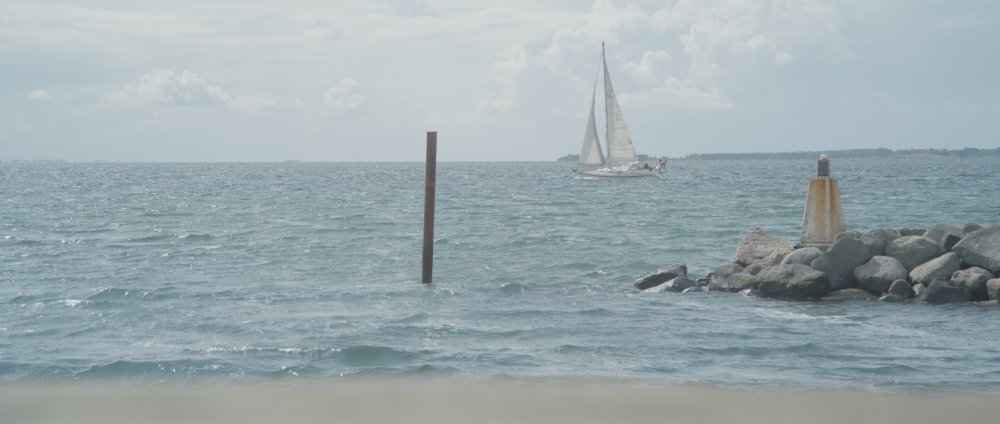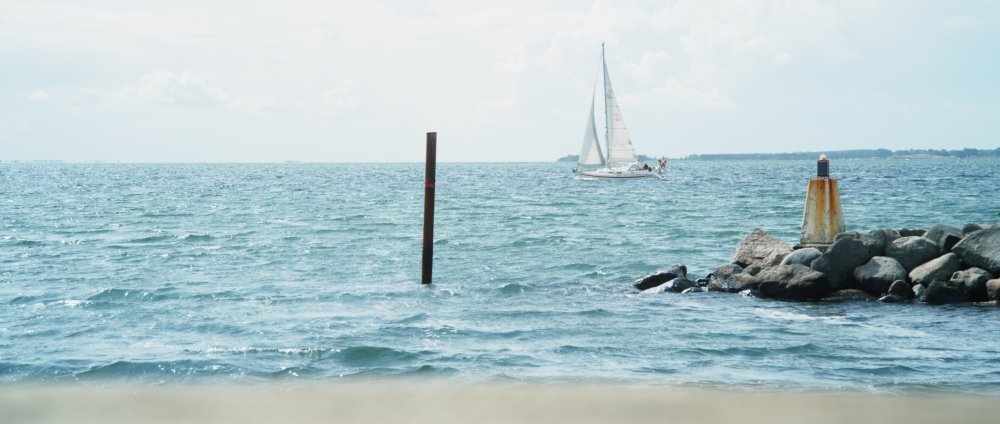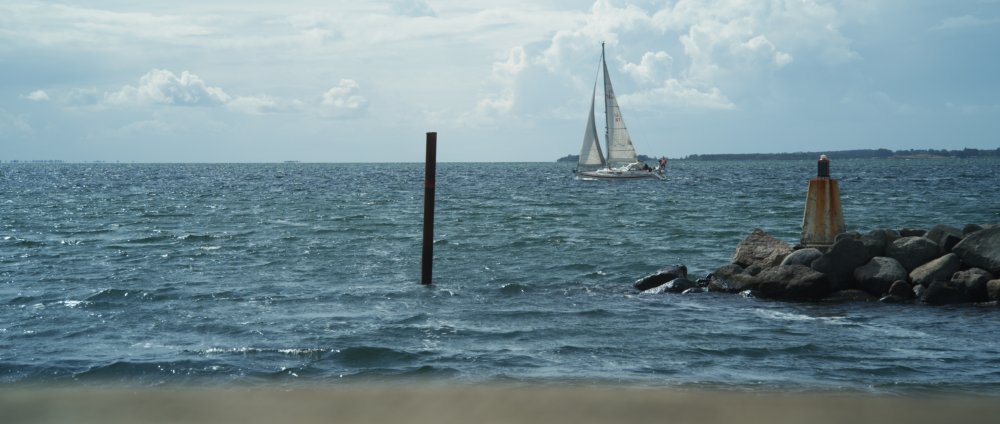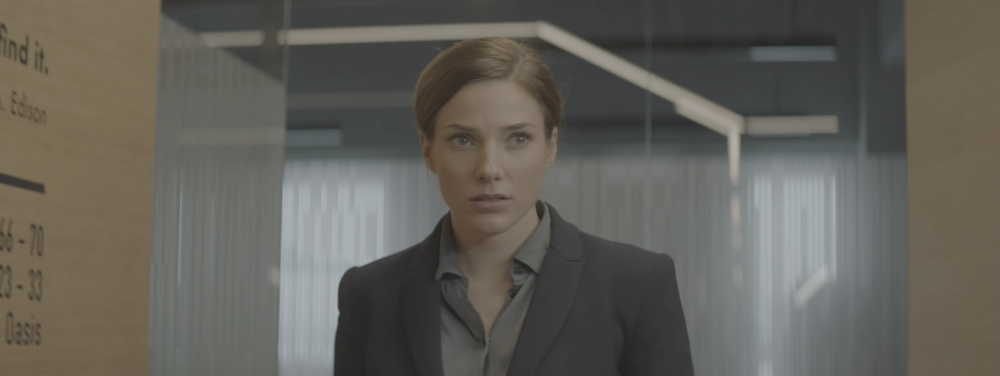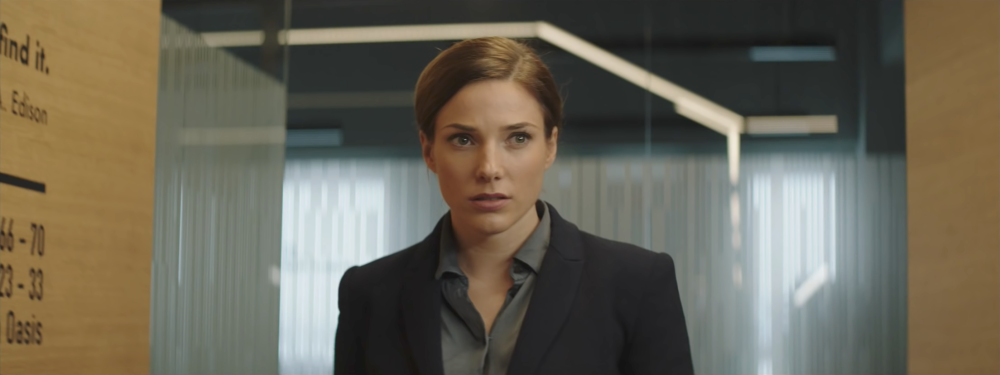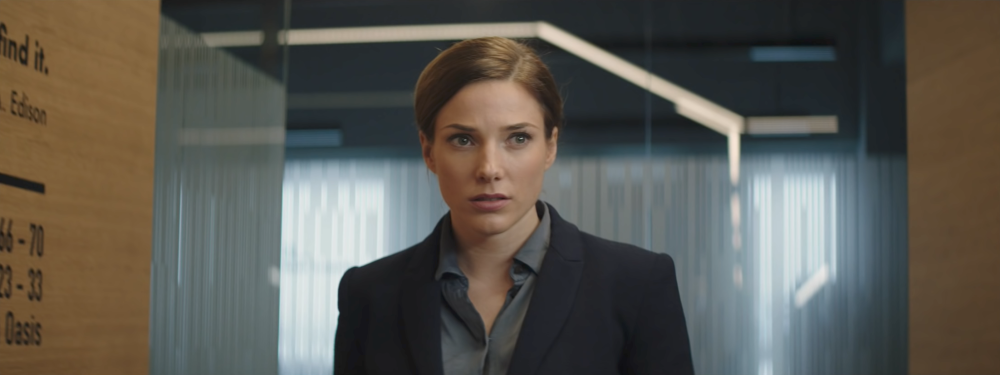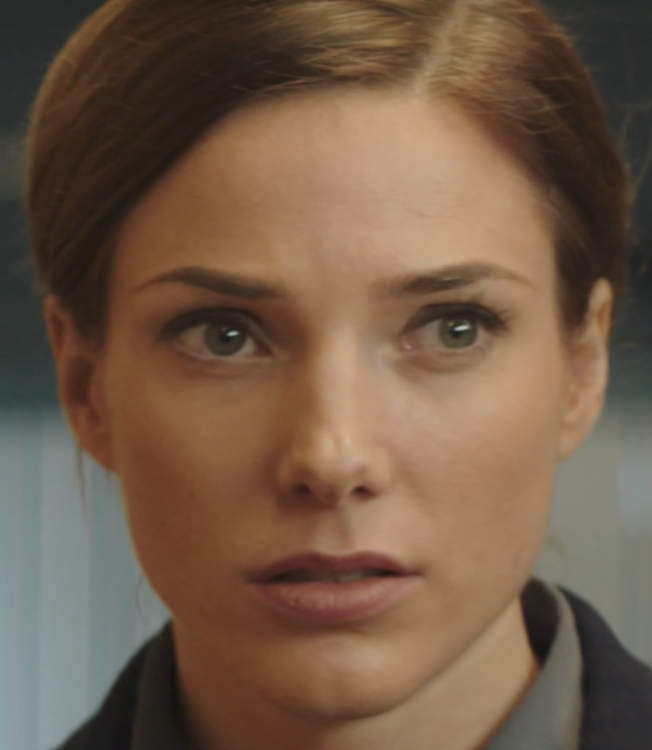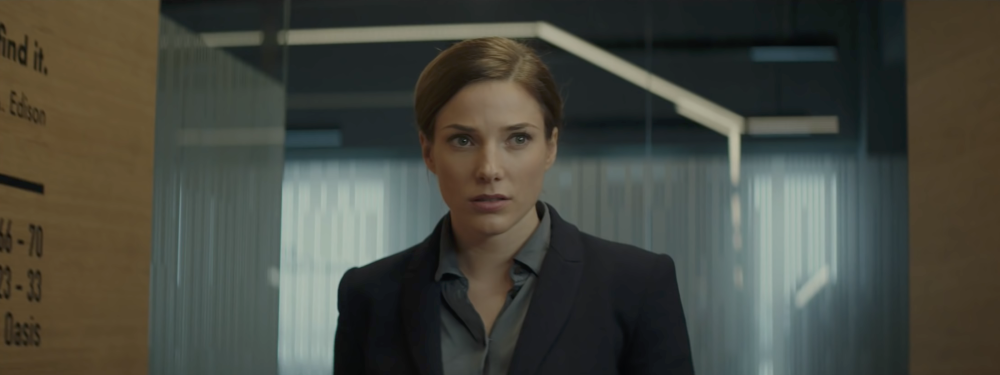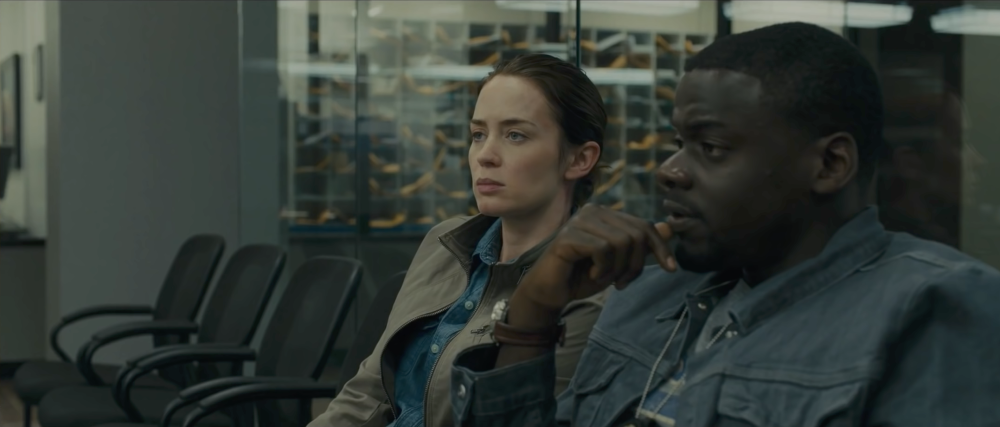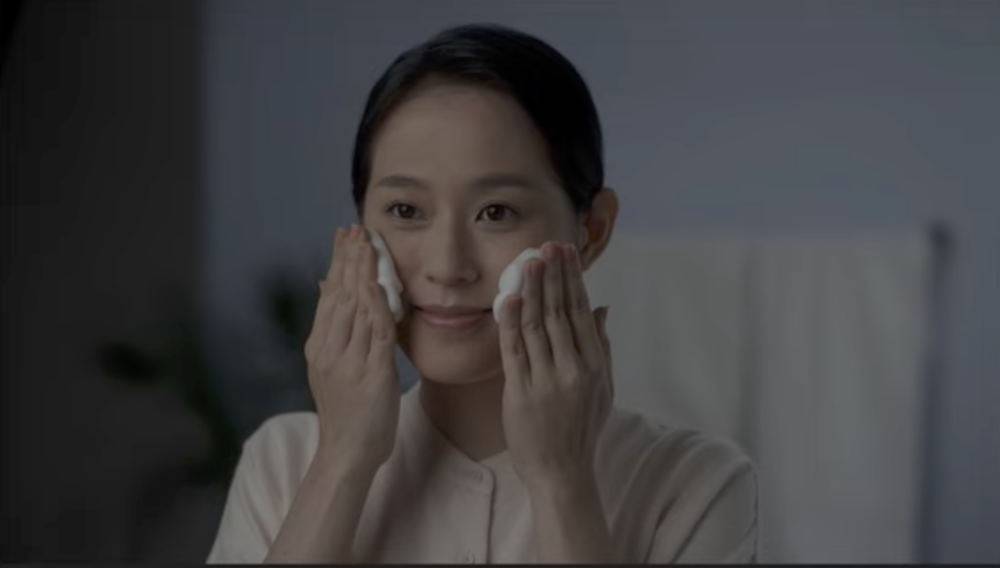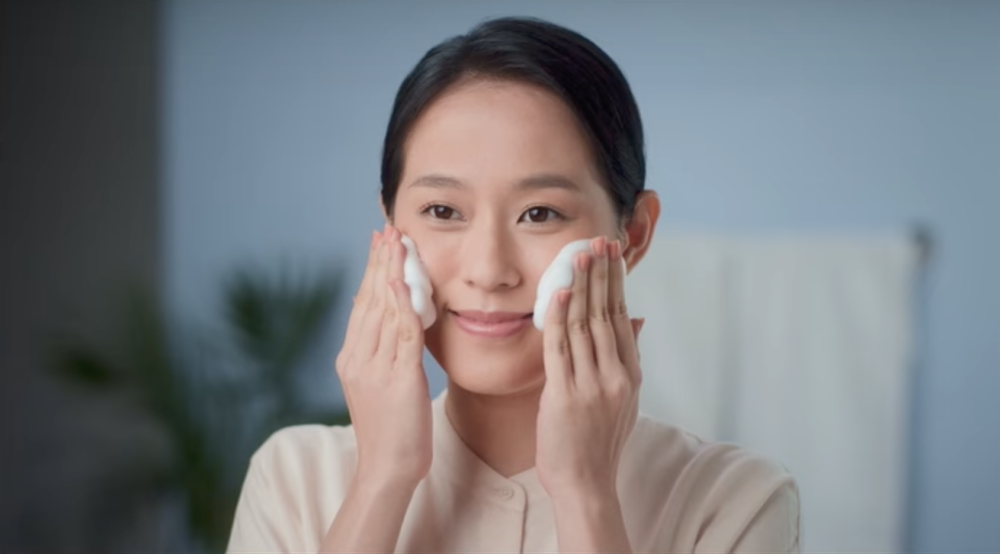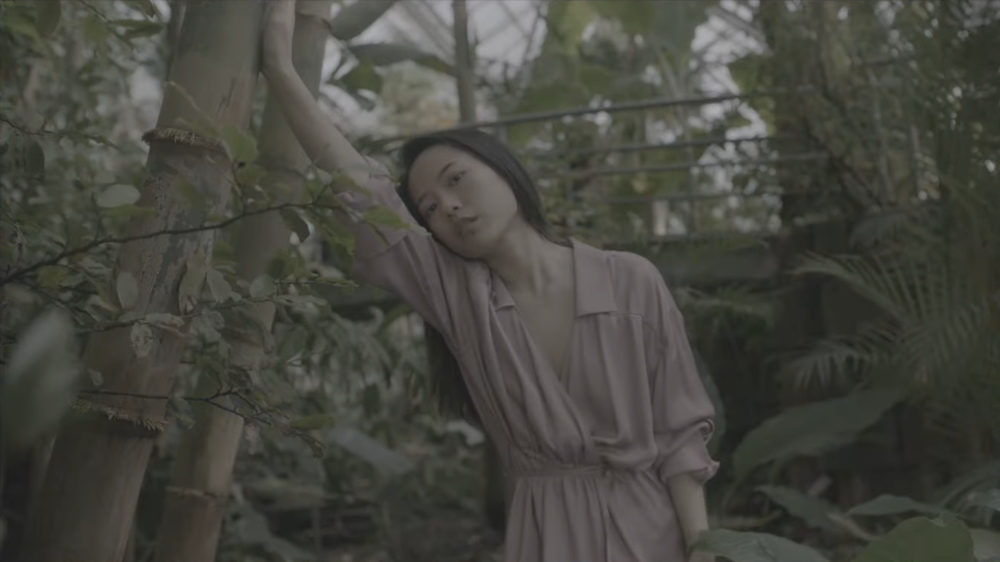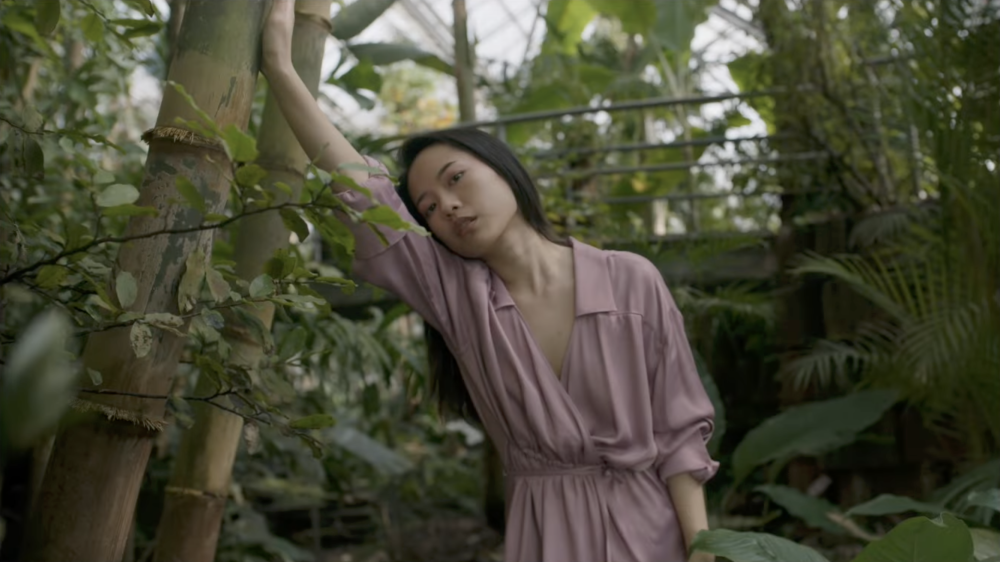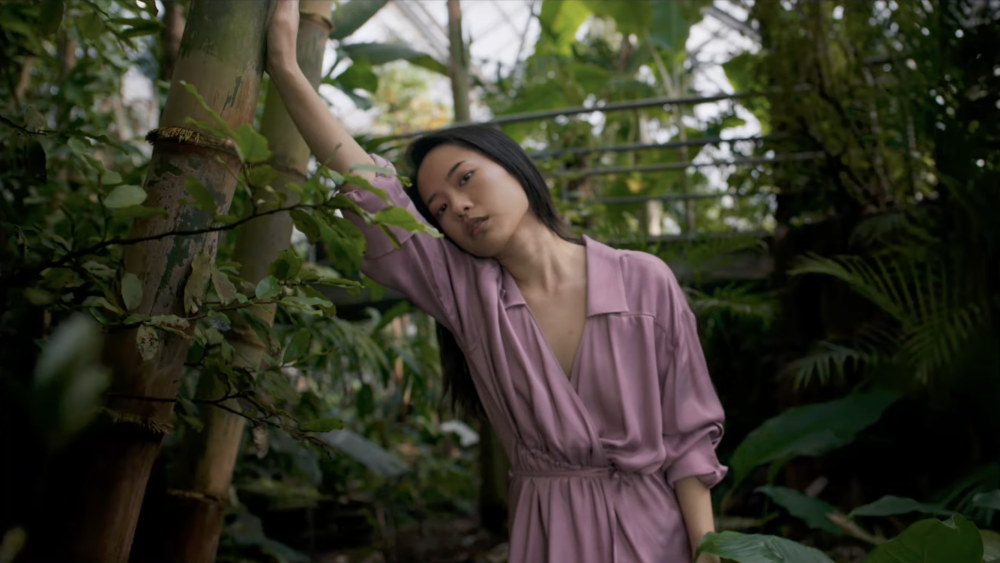Leaderboard
Popular Content
Showing content with the highest reputation on 10/20/2023 in all areas
-

End of the shallow DOF obsession? Is 2x crop more cinematic?
sanveer and 3 others reacted to Andrew Reid for a topic
I was thinking the other day about how almost all lenses look best wide open. So if it's a full frame F1.4 lens you see most clearly the rendering it has wide open rather than say, F5.6. The advantage of a 2x crop sensor is that you get to shoot wide open and see more detail in backgrounds. You take, say a 10mm F2.0 micro four thirds lens, it has the look of F2 but the deeper DOF as well so the setting isn't completely creamed out. If you have a really beautiful setting, you don't want it to be invisible and just bokeh in every shot. So you could stop your full frame lens down to F4 or even F8 but then the whole character of the lens is lost and they all look uniformly pretty much the same beyond F4. I think it begs a comparison... I might do one soon. Take a Super 16mm 26mm F1.1 lens on a GH6, and compare it to a 50mm F1.2 on full frame, and also the same 50mm but stopped down to F2.2 to match the equivalent aperture of the S16mm lens at F1.1 wide open. On the otherhand, the advantage of full frame might reveal itself more clearly when the focus distance is further out, and the subject remains a little bit separated from the environment, whereas on the 2x crop camera they'd be on the same focus plane, 'infinity' might start from about 3m outwards. I understand the appeal of medium format, 65mm, large format cinema cameras, full frame, and so on... Just think that 2x crop is not without merit and can even serve the story better in many cases.4 points -
Let's compromise and meet in the middle, and admit 1.5x is the "most cinematic".3 points
-
Before I started to develop the Rec709 conversion for the SIGMA fp I did quite a bit of research on how different manufacturers are creating theirs as a starting point. One of the main ingredients seems to be that after the tone mapping of the cameras dynamic range into Rec709 nearly all manufacturers LUTs have a baked in default contrast around a pivot point of middle grey. This looks great in a controlled studio scene, because it will be quite punchy out of the box. Additionally, it is hiding shadow noise because it will push these down as well. However, in reality this means you are always pushing highlight information much higher by default than you would need to. Same goes for the shadow details. So usually the first post step would be to counter this effect. My conclusion out of this was to create Rec709 LUTs, which are only tone mapping correctly and possibly create a smooth rolloff. Contrast has/can be added in post around a custom pivot point, or by adjusting the curves. Let me demonstrate that effect on some sample stills, guess that is easier to understand. SIGMA fp Rec709 LUT (only colour and tone mapping into Rec709): SIGMA fp Rec709 LUT + default contrast at a pivot of 45 IRE (intentionally a little bit too much to show the effect): SIGMA fp Rec709 LUT + custom contrast at a pivot of 75 IRE Guess this is one of the main reasons so many professional colourists are using CST/ACES workflows, to have a better starting point compared to manufacturer Rec709s. Maybe this information can provide useful for some of you. 🙂2 points
-

Simple colour grading > Camera colour science (Why you should learn to colour grade)
solovetski reacted to kye for a topic
People seem to be obsessed with nit-picking the colour science of cameras, but indicate they don't colour grade for one reason or another. To me, even a few simple adjustments can improve the image so much more than the differences in colour science between manufacturers. In fact, the image out of camera is like a plain sponge cake straight out of the oven - it's nice and the quality matters but it's far from the final result. Colour grading is also talked about as being super complicated, and it can be, but it doesn't have to be. Simple grades can still be really powerful. Here are some examples from online, to show how much of a nice image is camera colour science and how much is colour grading. ARRI LOG: With ARRIs LUT: Grade: The above grade was done using only white balance, the lift / gamma / gain controls, a vignette, log wheels, in that order. To look at skin tones, the holy grail of camera colour science - here's a before and after.... before: Then on top of the previous look, here's additional treatments to give it more of a film look. These additional adjustments were: Gain (to lower exposure), white balance, saturation (lowered), darken shadows, in that order. Which was inspired by this frame from Sicario: Here's the video showing the whole grade: https://youtu.be/8GkcqEA72QM Next example - SOOC: with 709 conversion: Grade: Video link: https://youtu.be/fRDjEB6ryyQ Next one - with 709 conversion: Grade: Video: https://youtu.be/OmBBYHMi_ek Next one - SOOC: With 709 conversion: Grade: Video: https://youtu.be/UNW_8jcGJqw There are literally more examples online to count, but I just focused on the more neutral looking colour grades, as the people doing dirty film grades probably don't care about skin tone minutia when they're going to pummel the image with Dehancer etc. So, what's the TLDR? Even half-a-dozen simple steps applied in addition to the manufacturers LUT can make a huge difference It's about making small changes to make the image look slightly nicer, and they add up The reason that fancy cameras look incredible is because the colourist takes the great work done on set and expands on it How do I get started? Look at the image and work out what tool might improve it (if you have no idea, just try the basic ones) Wiggle whatever tool back and forth, deliberately going too far one way and too far the other way, then find the best spot Compare the adjustment you just make to see if it makes the image better or worse, if it's better then keep it, otherwise undo (sometimes a really good adjustment will look completely natural and the 'before' will look like something is being applied to the image and is damaging it) Go to 1. Repeat until you can't find anything that makes the image look better. If you're using another image to inspire your look, then for step 1, just look at both images and work out what looks different about yours, and try and fix it. Is it brighter? Darker? More contrasty? A different colour? More or less saturated? Adding a vignette to lighten your subject or darken the other areas of the frame is a good trick. Looking to find anything in the frame that's distracting and de-emphasising it is really useful too - even just lowering the brightness or saturation can really stop it from fighting for attention. Even by the time you've adjusted these basic tools, you'll be well ahead.1 point -
Modern fast lenses were originally requested by journalists. Specially zooms. At large apertures you solve two problems: 1) Poor lighting 2) Unpleasing backgrounds usually encountered at press conferences, the average street, and most offices. The "cinema look" was not even a thing in video up until about 2010, since most video productions were a variation of journalism: documentaries, long form news stories, tv broadcasts. All of those requiere deep DOF about 99% of the time. As you say: if you know what you're doing you actually want to show the background of your shot. Say, asking your subject to stand for the interview in front of the coffee shop were most patrons are visible vs. asking the interviewy to stand in front of a wall of the coffee shop. So the question is: ¿does this particular background need to be softened or not?1 point
-

Mobile Phone As Camera Wisdom/Advice
sanveer reacted to Andrew Reid for a topic
Cheaper alternative to 12S Ultra is the Xiaomi Mi 10 which can be had for about 200-300 euros used. This produces 6K RAW reliably at 24fps in Cinema DNG from a 1/1.33" sensor, same size as a top-end Galaxy and much larger than the older phones with their tiny 1/2.5" chips. Oneplus 8 Pro is the MotionCam's developers favoured device. It's reliable, fast, great sensor, good selection of lenses and does 4K/60p in RAW. McPro24fps is very handy for 10bit when you don't want the massive file sizes of RAW. By the way MotionCam can transcode to ProRes on Android phones in-app, or you can do it in post with their free app too. It's the Magic Lantern of phones basically.1 point -

Simple colour grading > Camera colour science (Why you should learn to colour grade)
hojomo reacted to hyalinejim for a topic
Lol! I have used just one LUT for every single client job I've done over the last 5 years. It emulates the colour response of slightly overexposed Portra 400 film. I pop it on and adjust brightness, contrast and white balance in ACES space before the LUT. It takes 15 to 30 seconds to do most clips, and makes matching shots a breeze. I've made a new version for myself every time I get a new camera, so technically it hasn't been just one LUT, it's been three. But it does the same thing for each camera.1 point -
D Day is tomorrow Amazon France assures me, after several delays due to stock. It will then become my principal stills camera with the 40mm f2 for every day and candid work, the Tamron 35-150mm f2/2.8 for ceremonies, speeches and couple stuff plus the Tamron 20-40mm f2.8 (adapted unless they bring out a Z Mount option within the next 5-6 months) for my wide requirements, but I will not now be getting a Z9 body to accompany it. At least not until next Winter soonest. Finances more than anything with even used Z9's still at 5.5k+ here in France, I can't justify it after a stupidly high unexpected tax bill due to a mistake on the tax people's side 😒 It comes down to a year of occasional lens swaps, maybe 5-6 times over a 12 hour typical shoot, or spend 5.5k. My head says I can't swing that. Ideally, I'd flip everything and go all in on Nikon as my heart has gone back to them and for me, it ticks all of my boxes, but instead, 2024 will now be a hybrid year of Nikon for stills and Lumix for video. This is no bad thing as Lumix did and still does shine for me. The all singing all dancing wunderkind that is the S1H is going back into primary video unit role with one S5ii for longer static stuff and gimbal, and then selling the other S5ii and 3x now redundant lenses. It's a slightly tighter, but more capable set up, especially on the stills side and whilst not the absolute ideal, ticks all my boxes. Over the course of next year, I will try out some Zf video capability though just to see how it stacks up against the S5ii. Anyone else getting a Zf? I can think of at least 3 other people who I think will be tempted at the very least...1 point
-
@OleB I've just started watching your series on the Sigma FP and it's really great what you have done and shared so big thumbs up from me. I'm almost tempted with the FP (or L) but just one or two, 'too many' little quirks and issues that I can't quite get around for my needs. Love the form factor with the Smallrig cage with wooden grip...which is as much as I'd want to rig it out and I know there is an aftermarket tilt option, but then I compare it to the S5ii and for my needs, sadly the Lumix 'wins'. Sadly, because I'd switch to...or rather, would already be using the FP (or L). Your series is still interesting however so thanks for that.1 point
-
Ha, I was about to say the same, this having been my main approach for around 5-6 years now. But I should add, more by default than design based on certain camera choices. Some would argue, I should have chosen my cameras based around other factors and not let this be a default, but overall, for me, it’s about balance and compromise not outright ‘what I’d do in an ideal scenario with the necessary funds’. On the topic of SDOF, I have always been a fan. I have always liked and been drawn to a shallower DOF throughout my 23+ year career in photography and 13+ in video. I’ve never been a fan of hardcore uber-shallow DOF in my own work, but probably more because I have rarely owned anything faster than f1.4 lenses in full-frame terms. For the last few years, I have shoot FF stills and a mix of FF and S35 video, but in 2024, reducing the amount of S35 dramatically as I am moving away from using so much 50% slow mo in my work which due to my kit choices, has meant using S35. I’ve decided I prefer the full frame look and that coming from 6k, so that’s where I am going. Lenses/DOF, with S35, I was mostly shooting f2/2.8/4 and I will continue to do the same but with even less apparent DOF using FF instead of S35.1 point
-

End of the shallow DOF obsession? Is 2x crop more cinematic?
solovetski reacted to kye for a topic
I think a key piece of the puzzle is the human side - how we see and how our brains interpret what we see. Our eyes have an aperture range and focus just like a camera lens, so anything that is outside of this range isn't going to look natural. Images with slightly too shallow a DoF for the perceived subject distance will seem un-natural, but might be what we see if we have been poisoned or drugged and our pupils dilate beyond their normal range. If you go shallower than this range and it's just going to look completely wrong. It's AN aesthetic, but it might not match your DESIRED aesthetic. Our pupils dilate in low light conditions, so it's going to seem more plausible to open the aperture a bit in low-light situations. Our eyes do adapt the gain from our rods/cones so shooting with a fixed ISO isn't necessary as there is some flex there. In very low light we switch from the cones (which are the colour-sensing ones) to the rods (which are monochrome) which is why in very-low light we can't see much / any colour. Reducing saturation in colour grading might help in making scenes set in very low light feel more natural. Our pupils also dilate when we are looking at something we really like / love, and our eyes can adjust the gain down a bit to compensate, so opening up the aperture for romantic scenes is also appropriate. The other non-DoF element is in colour. We tend to remember scenes as being more colourful than they actually were, and I would theorise that this effect is greater if the memories were positive ones, so this could also be taken into consideration during post-production. I think a large part of film-making is using the equipment in ways that deliberately trigger the right emotional notes and psychological connotations, so knowing what these are and using them to your advantage is going to help your work be interpreted correctly, and the piece be more engaging.1 point -
LUT’s and color are about TASTE. Most conversion LUT’s are for a standard like REC 709 and guess what…they don’t look that great. But they are accurate. So they make a technically correct transform that accurately maps a larger than REC709 gamma and gamut from their sensor into a very limited TV ENGINEER STANDARD transform that is super accurate (to REC 709). And even though we all say we want accurate color we really don’t, and not accurate color in a small restrained container like REC709. We complain. Fuji have at least some other transforms they ship with their camera and that’s the right way to do it. But if it’s a REC709 transform, it’s never going to look good. It’s not meant to.1 point
-

Mobile Phone As Camera Wisdom/Advice
PannySVHS reacted to fuzzynormal for a topic
Appreciate the insight. My tendency is to hang back behind the tech curve so it's good to hear advice supporting that.1 point -
I got excited about this Xiaomi 12S for half a second! It's quite affordable. But then I realized the Xiaomi 12S Ultra is a different model, whoops. It's price.... ouch. Ah well, if I wait long enough it will become as "affordable" as the Panasonic Lumix DMC-CM1 is today. (welll... it's price seems to be holding up surprisingly well on eBay for how super old it is!)1 point
-

Lenses
kye reacted to homestar_kevin for a topic
I'm definitely tempted by the 12-60 2.8-4 a lot and may end up snagging one if I get a gh6 kit or something. They can be pretty pricey used, but it's a very nice lens. I wanted to super zoom of the 14-140 to try on my BMPC but have ended up using it on my g9 a bit too.1 point -

Mobile Phone As Camera Wisdom/Advice
PannySVHS reacted to Andrew Reid for a topic
If you want to go full on cinema with a phone, get Motion Cam for 4K and even 6K RAW recording on certain Android phones. The best options for that are quite cheap. Oneplus 8 Pro for example If you want the convenience of H.265 get a Xiaomi Mi 11 Ultra and install Mcpro24, hike up the bitrate and shoot in 6K mode. Avoid the stock camera apps on Android, compressed, oversharpened, and 8K that isn't anywhere near 8K. iPhone shoots good video using Blackmagic's app. Stock app is vastly superior to the Android stock camera apps for video. ProRes for a start! Avoid Filmic Pro. It's a rip off and Mcpro24 is a lot better. Finally, look carefully at the older models before jumping in with latest and greatest (S23 Ultra for example, is a waste of money). The Xiaomi 12S Ultra has a 1" sensor and definitely outperforms Samsung in every way. The iPhone 15 Pro Max is tempting for Apple LOG though.1 point -
Yeah I agree with the above, no matter these improvements at the end of the day it is still a smartphone with all its caveats. No way does it actually compete with rigged mirrorless or cine cams with quality glass, filters etc in actual use. So many limitations. I tested the iPhone 15 Pro myself the other day at the Apple store, shot some log footage and then airdropped it to my iPhone to test it out in Resolve. The result was rather sub-par, mushy IQ with lots of noise. I'm assuming this is mainly due to the indoor light conditions and the camera app shooting at high ISO. Notice how all the examples in this thread are shot outside in perfect bright daylight conditions. Shoot indoors with average lighting or on a dim day/evening and the IQ falls apart. That to me has always been the real downer with tiny sensor cameras. They need perfect lighting. And no ProRes/Log can fix that. At which point you may as well let the iPhone do its computational magic and fix the image!1 point
-
A no budget short film, thriller genre. Shooting XH2S Editing FCPX Color grading DR https://vimeo.com/manage/videos/8701398901 point
-
Not much else to invent around, that's it : ) My choice on mobile side though would include the upcoming Osmo Pocket 3 anyway, available just in a few days... ;- )1 point
-
Yeah, that's the best result yet.. it's genuinely incredible!1 point
-

Nikon Zf - A New Compact Full Frame Camera
IronFilm reacted to homestar_kevin for a topic
Also just realized how cool this camera will be with the Techart PRO TZM-02 leica M autofocus adapter.1 point -
And so one feels like searching for the Naiads, beautiful and immortal freshwater nymphs that disturb the spirit of those who catch a glimpse of them emerging from the waters. Beliefs that embody the ambiguous feeling of fear and attraction to the waters. So far no Naiads and Nereids but only many sticklebacks! GH5MII and GH5S, various lens, natural light Sound ON1 point



